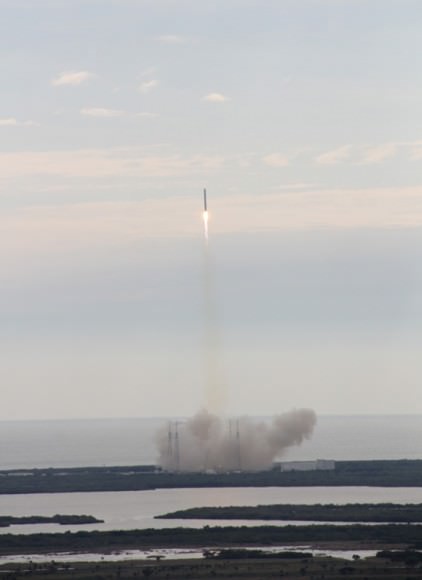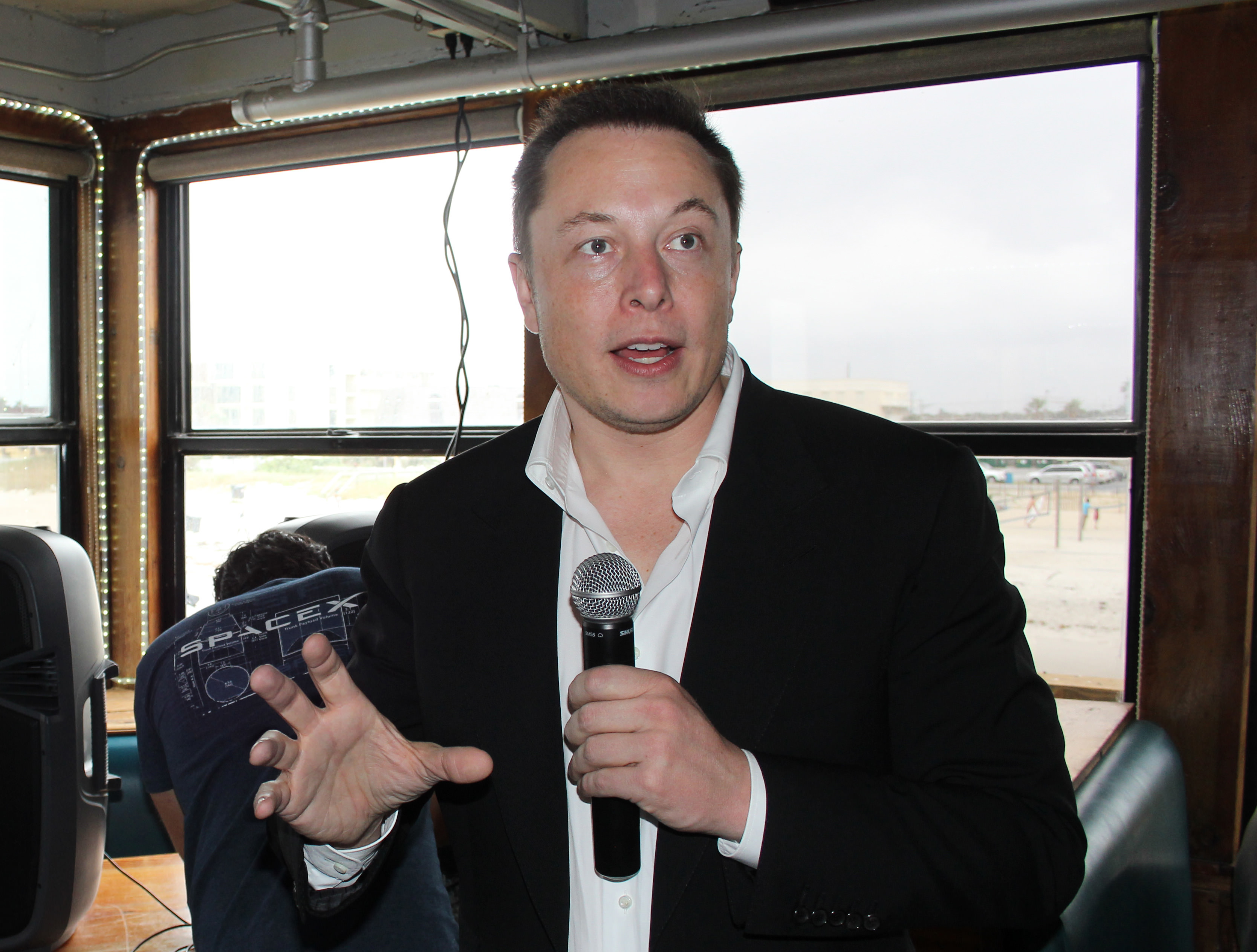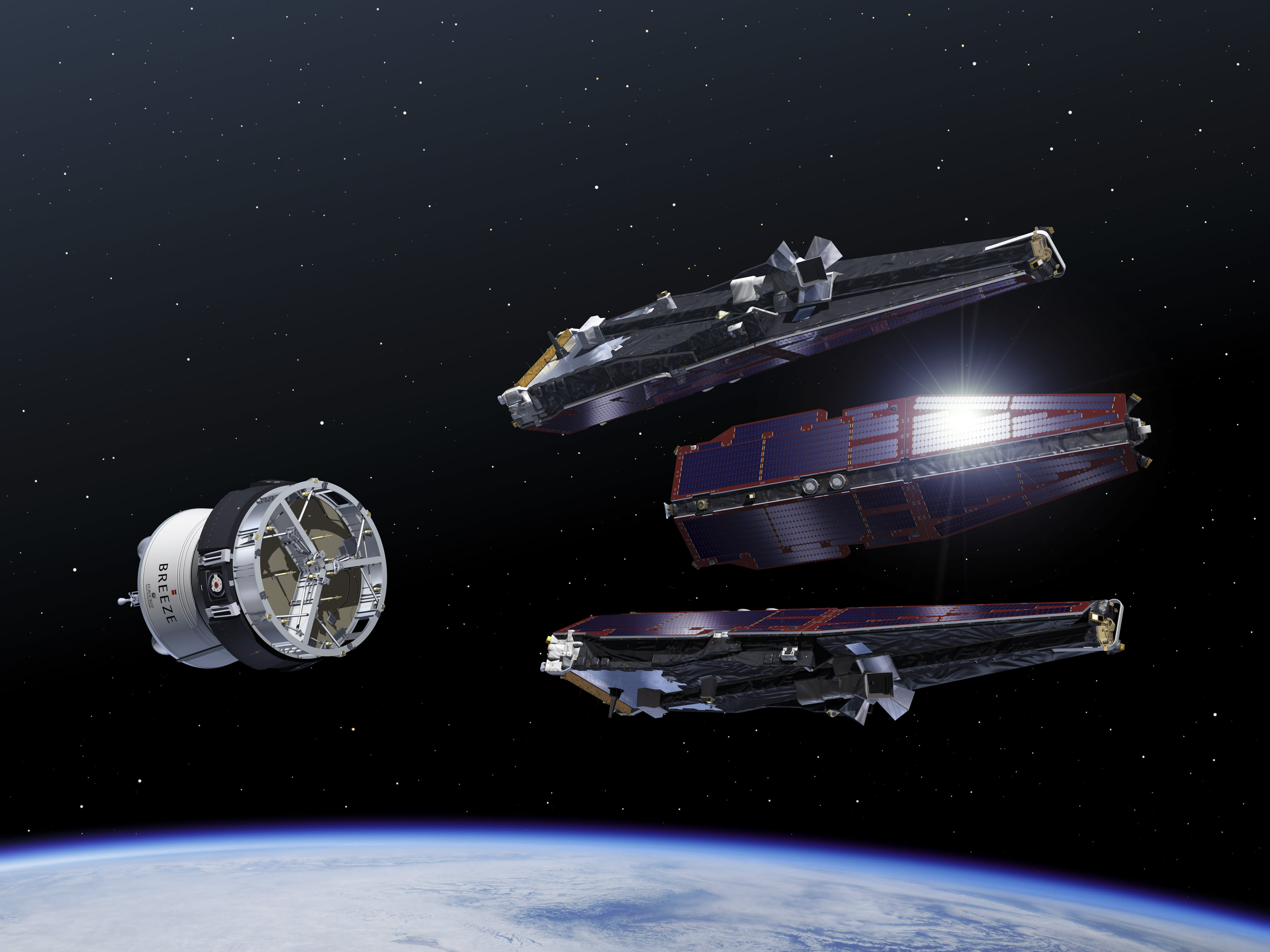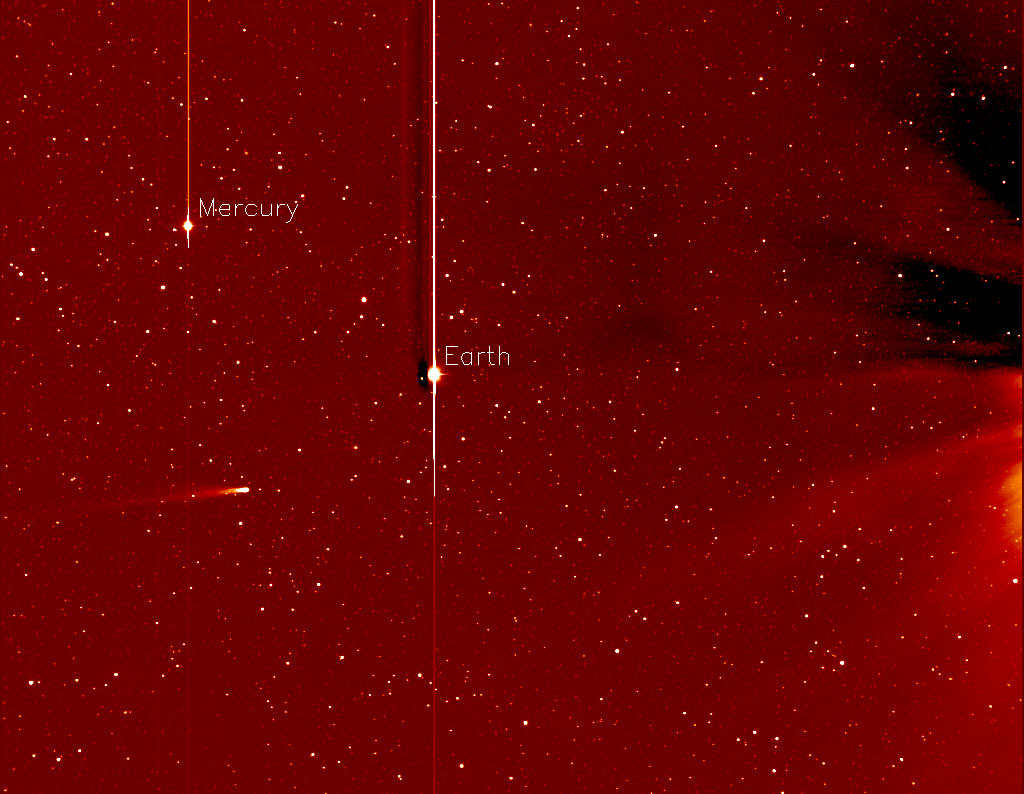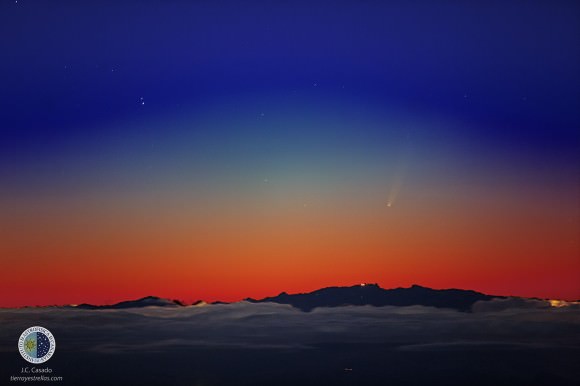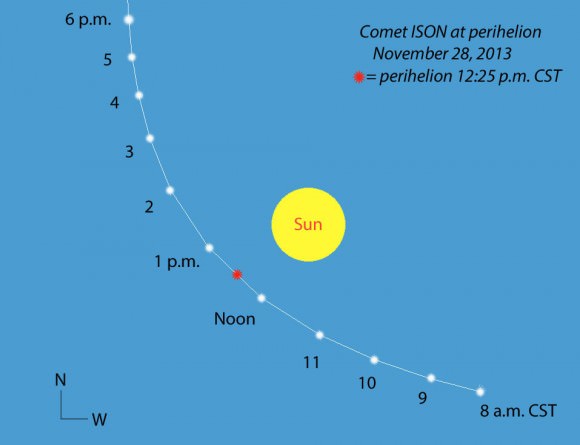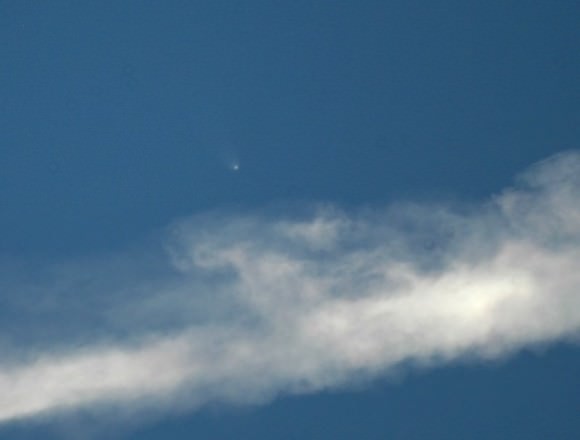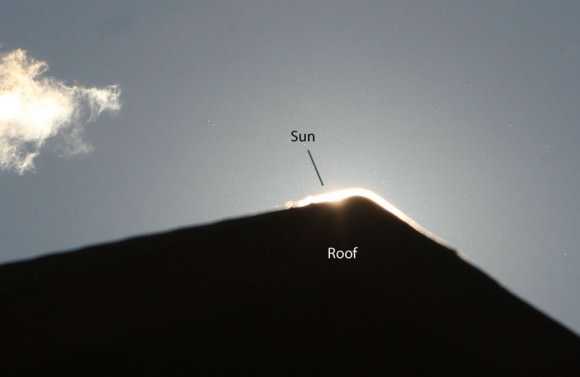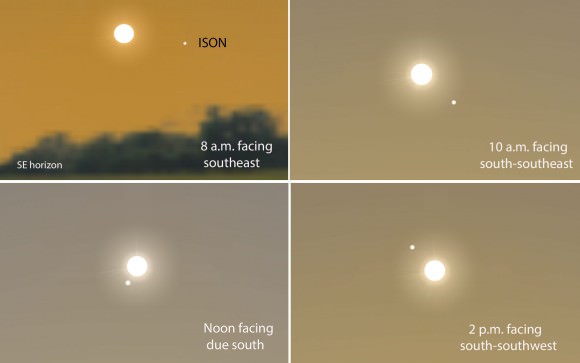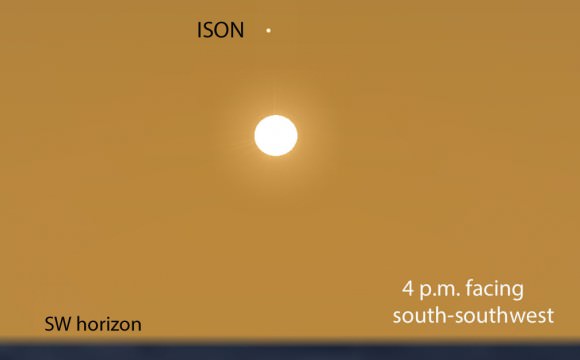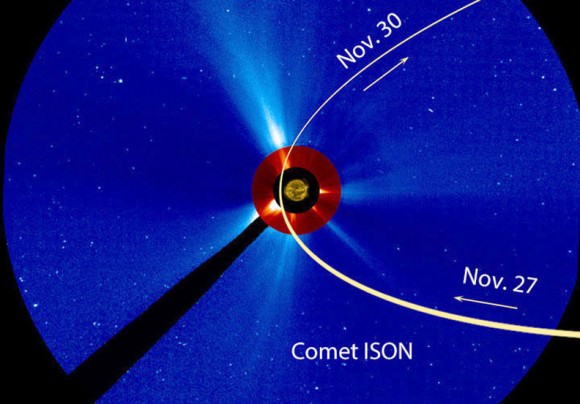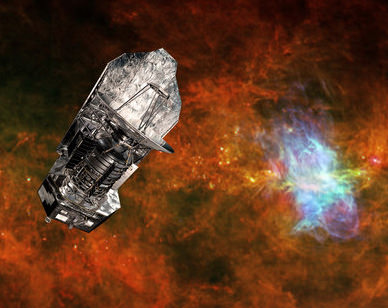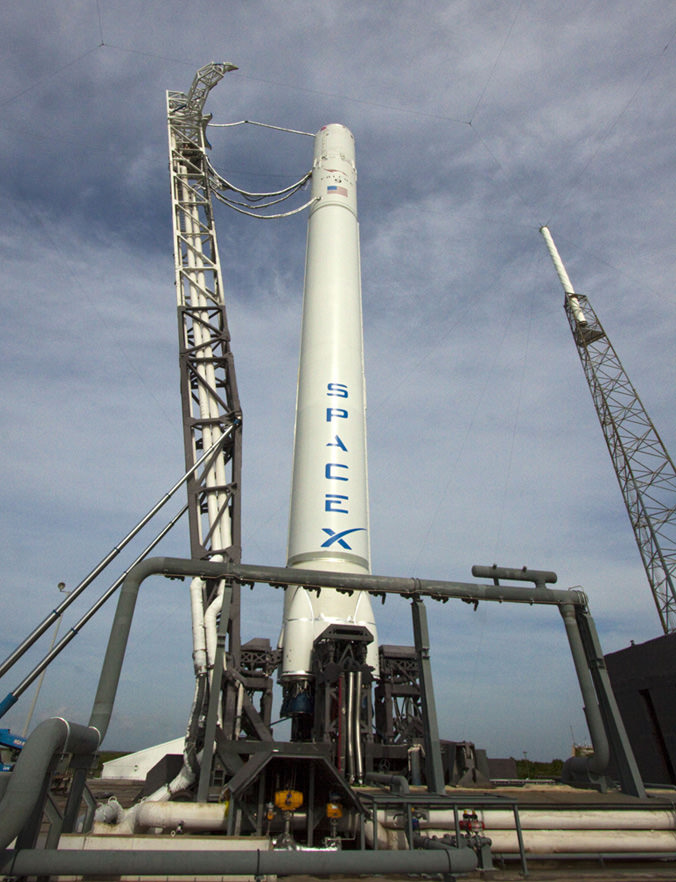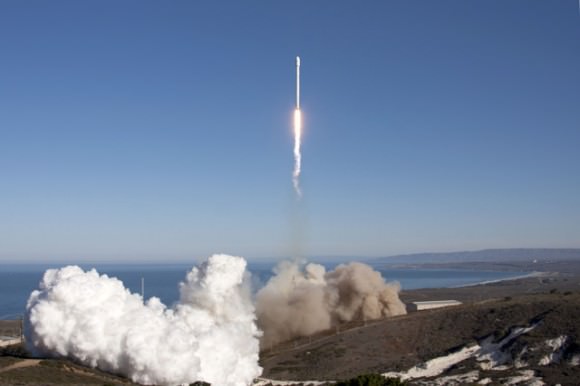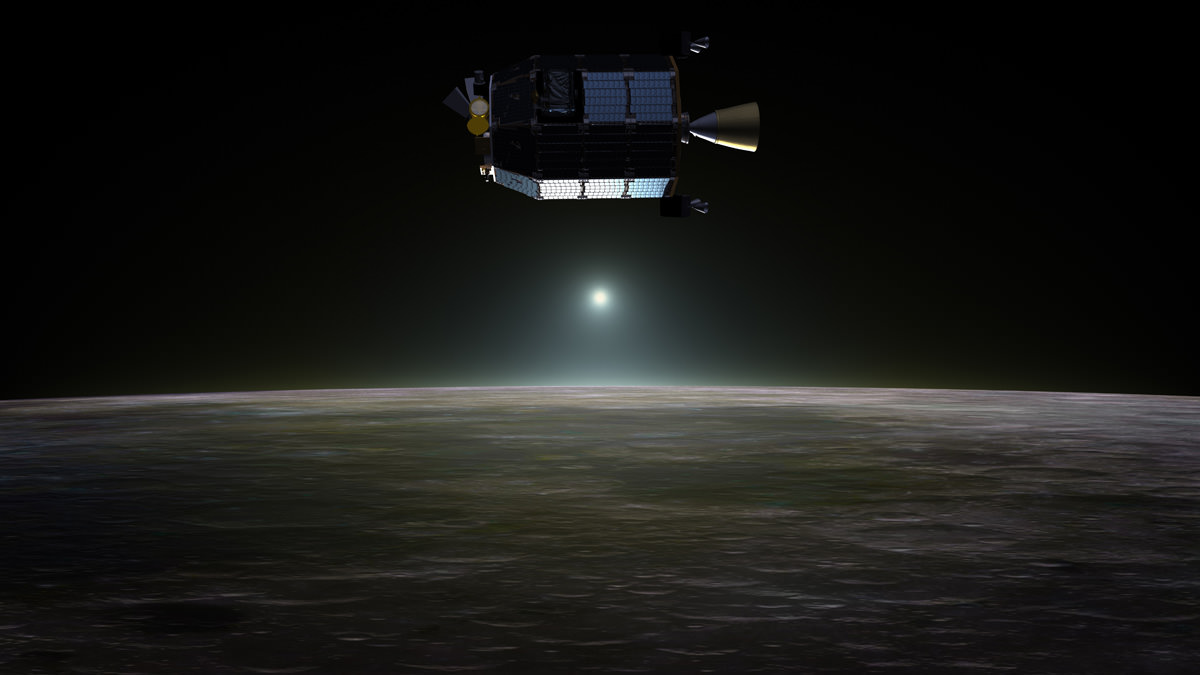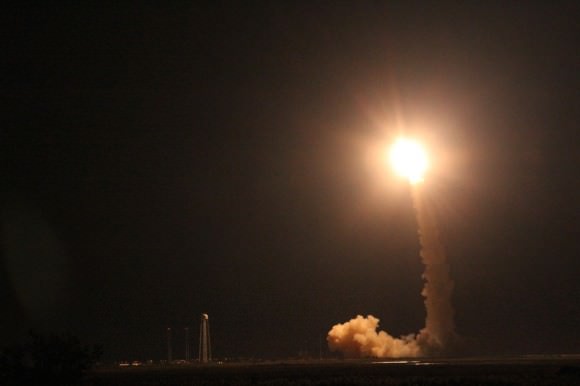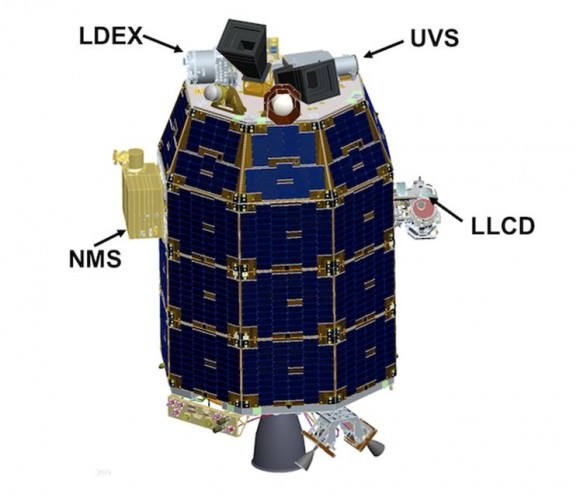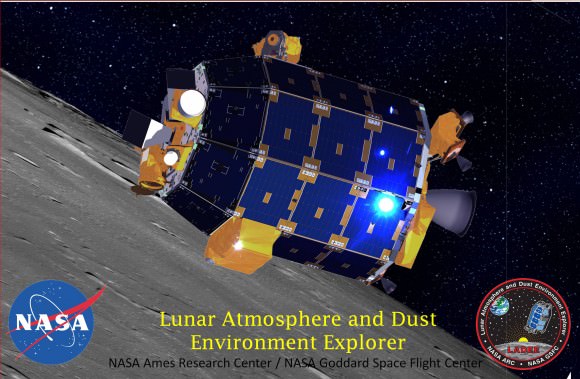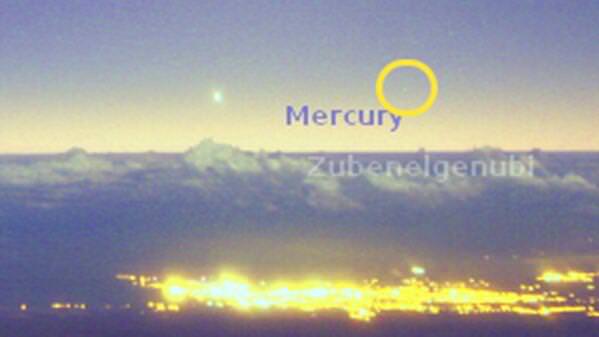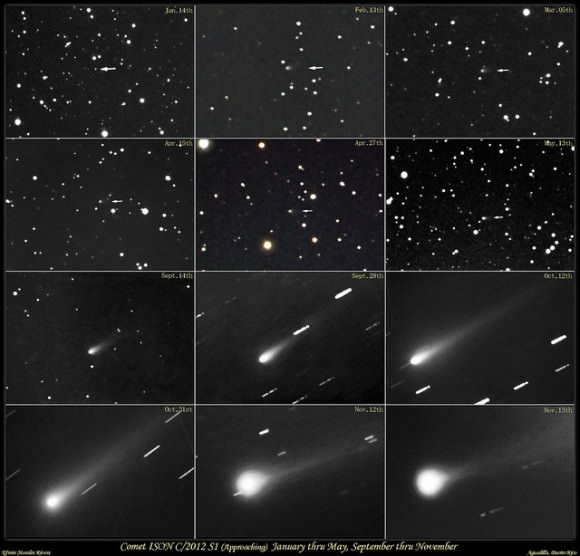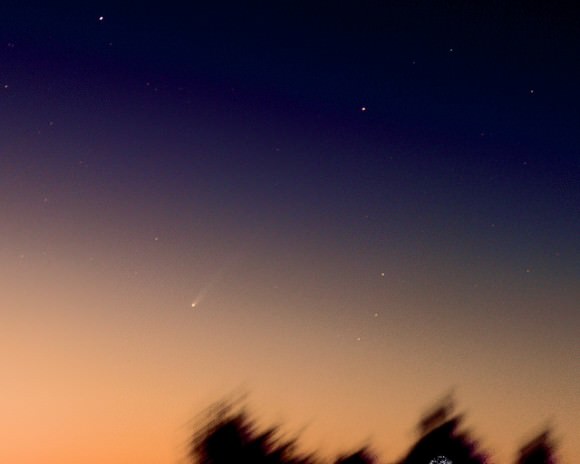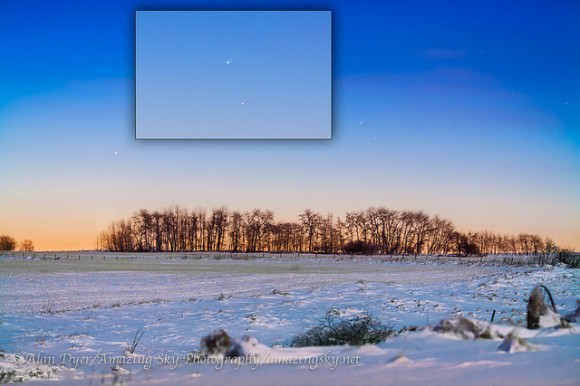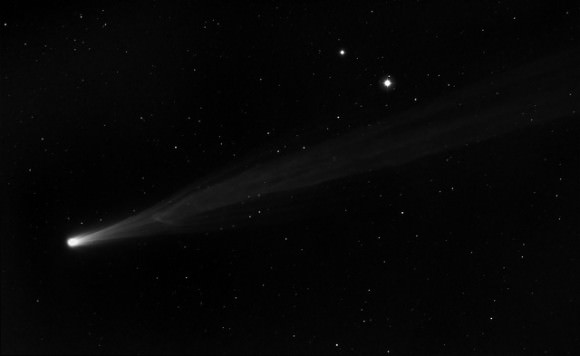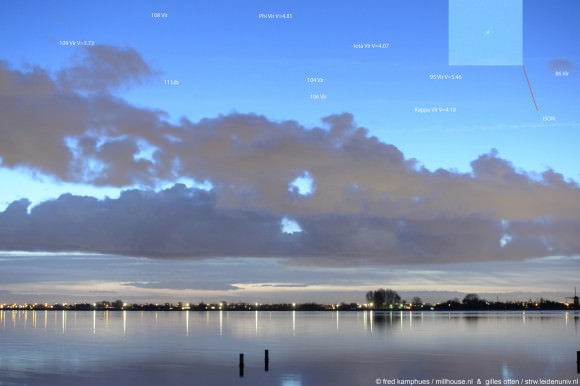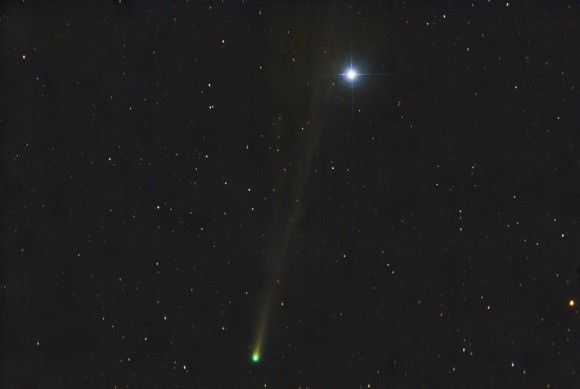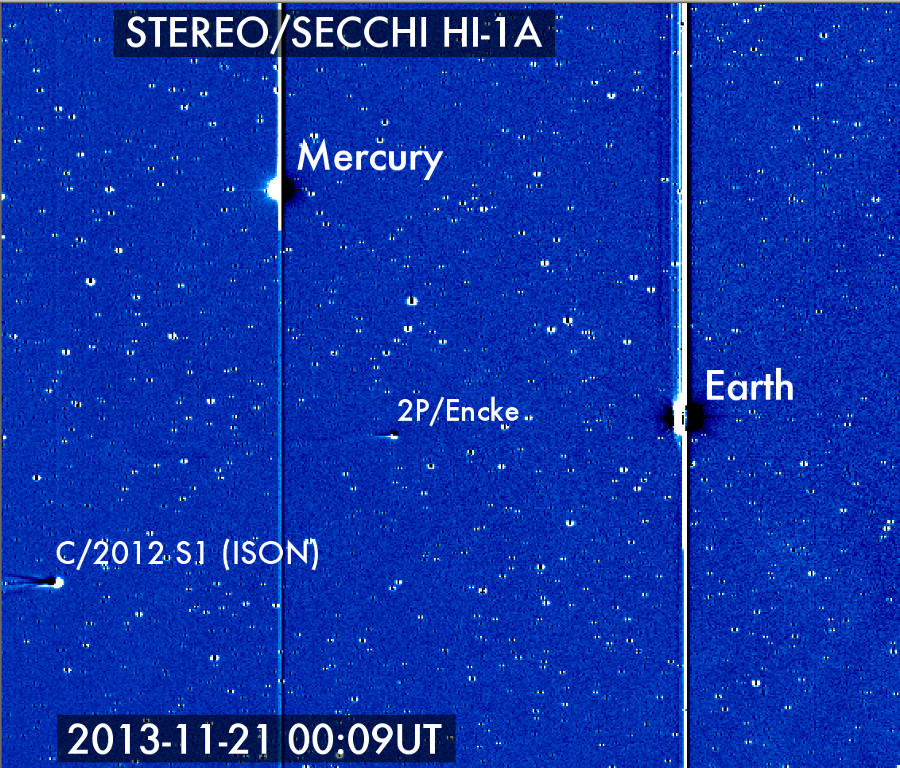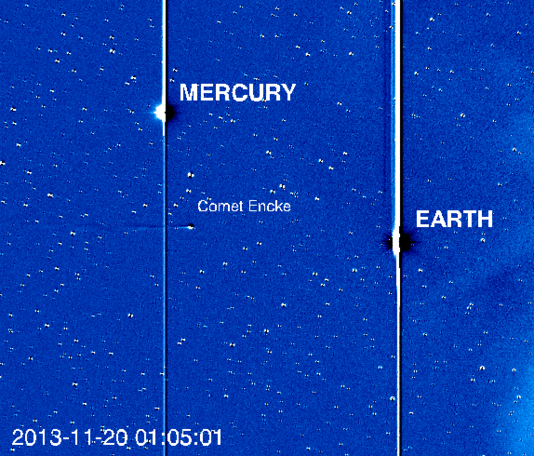SpaceX founder and CEO Elon Musk briefs reporters including Universe Today on Sunday (Nov. 24) in Cocoa Beach, FL prior to planned SpaceX Falcon 9 rocket blastoff with SES-8 communications satellite set for Nov. 25, 2013 from Cape Canaveral, FL. Credit: Ken Kremer/kenkremer.com
See live SpaceX webcast link below[/caption]
CAPE CANAVERAL, FL – A new space era potentially dawns today, Nov. 25, with the planned maiden launch of the next generation SpaceX Falcon 9 commercial rocket from Cape Canaveral, FL, that could completely revolutionize how we access the high frontier and “rock the space industry to its core” by cutting cost and production times – if all goes well.
Just a day before liftoff, SpaceX founder and CEO Elon Musk personally briefed reporters including Universe Today on Sunday (Nov. 24) in Cocoa Beach, FL, nearby the firms Cape Canaveral launch facility about today’s (Nov. 25) upcoming maiden launch of the companies upgraded Falcon 9 rocket, saying it was “very important” for the future.
“This launch is very important to the future of SpaceX. This is our toughest mission yet!” said Musk to a small group of reporters, including the author, gathered for Sunday’s exclusive pre-launch briefing.
“Whether or not this launch is successful, I’m confident we will certainly make it on some subsequent launch,” said Musk at the Cocoa Beach meeting with the media.
The Falcon 9 liftoff from Launch Complex 40 at Cape Canaveral, FL is scheduled for 5:37pm EST and will be webcast live by SpaceX for viewing at; www.spacex.com/webcast
Today’s (Nov. 25) inaugural blastoff of the privately developed Falcon 9 rocket with the commercial SES-8 HDTV and telecommunications satellite is especially noteworthy because it also features SpaceX’s first ever launch of any satellite to a Geostationary Transfer Orbit (GTO).
From the start, SpaceX designed the Falcon 9 rocket from a clean sheet aimed at radically reducing production and manufacturing costs and assembly times and thereby offer significantly lower launch price, says Musk.
“I don’t want to tempt fate, but I think it’s going to have a pretty significant impact on the world launch market and on the launch industry because our prices are the most competitive of any in the world,” Musk stated.
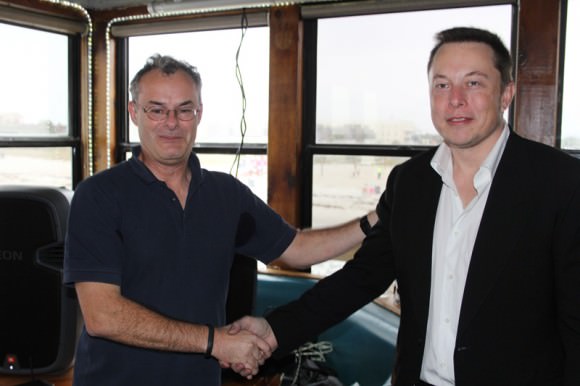
SES-8 also represents SpaceX’s first launch of a Falcon 9 carrying a commercial satellite to space from the Florida Space Coast.
“This is really rocking the industry. Everybody has to look out,” said Martin Halliwell, SES chief technical officer, who joined Musk at Sunday’s meeting.
The 3,138 kg (6,918 lbs) SES-8 satellite is a hybrid Ku- and Ka-band spacecraft that will provide TV and communications coverage for the South Asia and Asia Pacific regions.
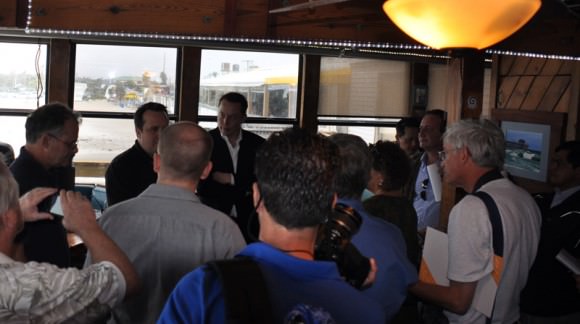
The SES-8 spacecrft was built by Orbital Sciences Corp and will be lofted to a 295 x 80,000 km geosynchronous transfer orbit inclined 20.75 degrees.
SpaceX has signed nearly 50 commercial and government launch contracts and thus already sports a very crowded launch manifest ahead of today’s Falcon 9 launch.
All five launches of SpaceX’s Falcon 9 rocket from Space Launch Complex 40 at Cape Canaveral Air Force Station were either test launches or flights to the International Space Station, under contract to NASA.
The five Falcon 9 launches to date from the Florida Space Coast also featured the original, less powerful and shorter version of the booster and has a 100% success rate.
This mighty new version of the Falcon 9 dubbed v1.1 is powered by a cluster of nine of SpaceX’s new Merlin 1D engines that are about 50% more powerful compared to the standard Merlin 1C engines. The nine Merlin 1D engines 1.3 million pounds of thrust at sea level that rises to 1.5 million pounds as the rocket climbs to orbit.
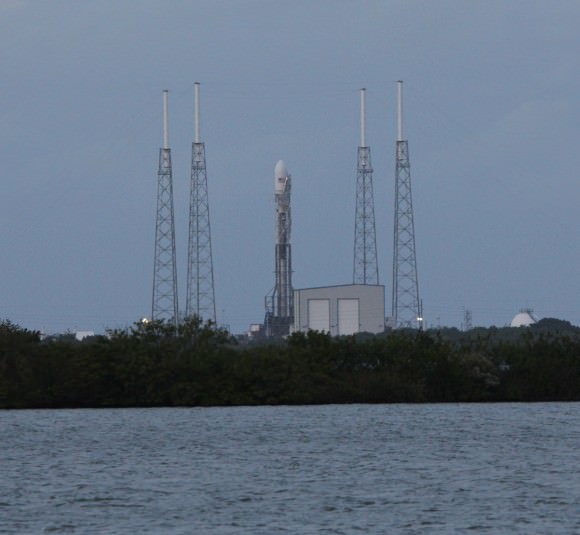
Therefore the upgraded Falcon 9 can boost a much heavier cargo load to the ISS, low Earth orbit, geostationary orbit and beyond.
The next generation Falcon 9 is a monster. It measures 224 feet tall and is 12 feet in diameter. That compares to 13 stories for the original Falcon 9.
The payload fairing for SES-8 is 17 feet in diameter.
The Falcon 9/SES-8 launch window extends for 66 minutes until 6:43 p.m. EST.
Weather outlook is 80% favorable at this time.
SpaceX is planning a live webcast of the launch with commentary from SpaceX corporate headquarters in Hawthorne, CA.
The broadcast will begin at approximately 5:00 p.m. EDT and include detailed discussions about the Falcon 9 rocket, launch and flight sequences as well as about the SES-8 satellite.
Stay tuned here for continuing SpaceX & MAVEN news and Ken’s SpaceX launch reports from on site at Cape Canaveral & the Kennedy Space Center press site.
…………….
Learn more about SpaceX, LADEE, MAVEN, MOM, Mars rovers, Orion and more at Ken’s upcoming presentations
Nov 22-25: “SpaceX launch, MAVEN Mars Launch and Curiosity Explores Mars, Orion and NASA’s Future”, Kennedy Space Center Quality Inn, Titusville, FL, 8 PM
Dec 11: “Curiosity, MAVEN and the Search for Life on Mars”, “LADEE & Antares ISS Launches from Virginia”, Rittenhouse Astronomical Society, Franklin Institute, Phila, PA, 8 PM
